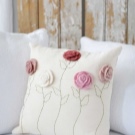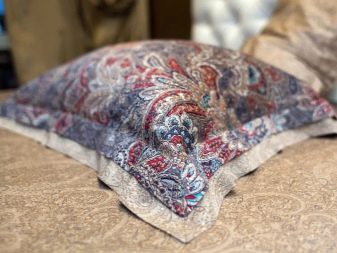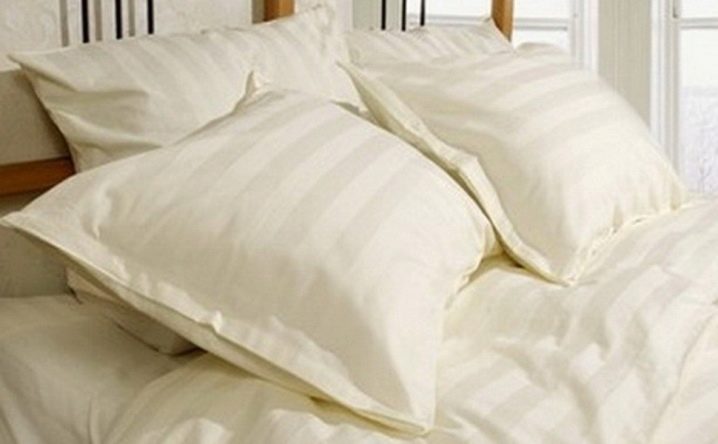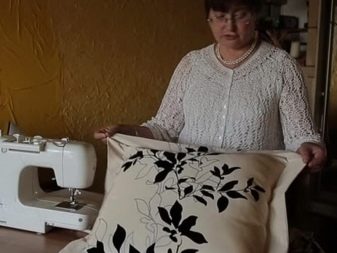Pillow case with ears: features and technology of sewing
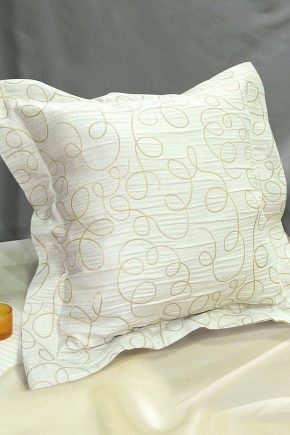
The modern rhythm of life takes more and more free time. Career growth, family and rare walks with friends. What can we say about the hobby or about matters for the soul. On the shelves are available all the things that are only necessary for life, and if they are not, then online stores can always help out.
But in the shops, not everything can be pleasant. For example, take bed linen. Not that coloring or unsuitable material. Or need just one extra pillowcase. How, then, in this case to do? Everything is simple - you need to sew your own pillowcase with your own hands. It will be an easy and quick way to solve the problem.
Pillow sizes
Many remember how they came to the grandmother in the village and slept all summer on large pillows, the size of which was almost the entire length of the body. These were pillows of 70 x 70 cm in size - a common size in the Soviet space. In every house, in every apartment there were such pillows. Until now, someone they have survived. This size has become a kind of standard for pillowcases that come in sets of bed linen for double and single beds.
Square pillows are also popular. They measure 40 by 40 cm, 50 by 50 cm, 60 by 60 cm. The last option is the most popular and is often found in bed linen sets. Smaller square pillows carry decorative functions, they are designed to dilute the interior. They are not suitable for sleep, as it is almost impossible to sleep on them.
With trends of European style, oblong rectangular pillows for sleeping began to have demand. For some, this option is the most convenient, with sizes of 50 by 70 cm for adults and for children 40 by 60 cm. These pillows began to gain more and more space on the bed. Pillowcases for pillows 50 to 70 cm are divided into several types:
- with a smell from above;
- with a smell on the side;
- With ears;
- With smell and ears;
- With ears and zipper at the back.
Pillow case with ears
Pillowcase with ears is a more popular name. But not many people know that in fact they are properly called "Oxford". This is a simple rectangular pillowcase size of 50 to 70 cm and with a border on the border. This border has a decorative character. The pillow is inserted from behind. It is not known where the fashion for these pillowcases came from. According to historians, they were used in ancient Egypt.
Simple pillowcases never carried in themselves any kind of excess and wealth. They were easy to use and too boring. That is why similar “Oxford” pillow cases were invented, with seams out, with laces and borders. The width of the curb depends on what functions the pillow will perform: decorative or it will be a pillow for sleeping. Usually their width does not exceed 15 cm.
If the pillow is designed to sleep, then the edging should be flat, without excesses and finishes, for the convenience of sleep. Decorative pillow case can be wavy, with applique or trimmed with lace. Due to the fact that the curb completely goes around the pillowcase,hiding behind all the cuts for the pillow, the hole for convenience is made from behind. So the edging is not touched and not deformed.
The choice of fabric
Before you sew something yourself, you must always pick up the material first. The choice of fabric comes first.
Of course, it is necessary to give preference to those fabrics that are easy to use or just like you. For example, silk. Soft and delicate silk is very pleasant to the body, has a unique property not to "collect" dust. It is strong, as it consists of natural fibers. There is a statement that silk has useful properties. The downside of it is that silk is very wrinkled and refers to a number of expensive fabrics.
Other natural fabrics are chintz, satin and calico. Durable and easy to use, with frequent washing do not lose their quality, especially coarse calico, which does not change its size. Do not accumulate static electricity, which is very important in the hot season - from a pillow case made of coarse calico you will not sweat a lot, since the coarse calico absorbs sweat and moisture. In the morning on the face there will be no dilution.
An inexpensive option would be chintz, which itself at cost is the most budgetary option. This is a light and soft fabric.It is suitable for patterns and self-tailoring of bed linen, as the edges do not crumble when working, and the weave does not stretch. One of the downsides is that chintz is not a durable fabric, after ten washes, the fabric will start to lose color, and after the next washings it will become less durable and may begin to tear.
Satin is no less in demand among the choice of fabrics for sewing. Durable, natural, soft and delicate fabric. For its external qualities, this material can be attributed to expensive types of fabric and they are often replaced with silk underwear, since at cost this option is cheaper. When used, it serves for a long time, it is not afraid of a large number of washes.
Sewing
There are two ways to sew a pillowcase with ears - with and without smell. The wrap-around pillow itself is more complicated and time consuming, it will take much more time and fabric. But such a pillowcase will look great on a bed. The odorless pillowcase is simpler to perform, but it also does not lose its charm. To sew it you will need to correctly calculate the required amount of fabric.
Calculations of pillowcases with a smell and without it will be slightly different, since you need to leave a certain amount of fabric on the smell, you do not need to leave anything on the odorless pillowcase.Consider the option of sewing on a standard pillow size of 50 to 70 cm. First, you should decide what the width of the ears will be and what character the pillow will have (decorative or sleeping pillow). For sleep, usually choose a curb from 5 to 7 cm.
Approximate calculation formula
Attacks to the seams + eyelet + cushion width + eyelet + seams on the seams - all this is equal to the width that should be noted on the fabric. For length, the formula is exactly the same, only length will be used instead of width. After all calculations, you can proceed to sewing.
Tip: before you start work, the fabric must be washed, so that it shrinks. After all, if you first sew a pillowcase, and only then wash, there is a risk that she will sit down and not put on her pillow.
Next, noting on the fabric all the necessary dimensions, cut a rectangle with the desired width and length. In order to insert a pillow, choose from two canvases what will be the back, and make a cut at the required height. We process it with an overlock, then sew a zipper. We fasten two canvases with English pins and iron the edges, but not much. After the edges are smoothed, turn the fabric over.And again we cut off the edges with pins, and then we draw cloths to each other.
On the resulting version, we measure the size of our pillow - 50 to 70 cm, and the remaining length will "go" on the ears. We stitch the resulting markup on the machine. The pillow case is ready. It remains only to insert a pillow. The difference with the smell pillow is that the ears will be either only on three sides, or a small piece of fabric will be sewn on the fourth ruche, which will be the smell. The curb itself will need to be sewn not to the base of the pillowcase, but to the smell.
How to sew pillows with ears with their own hands, see the next video.



